A Rare and Fine George III 18th Century Chinoiserie Lacquer Cabinet on Stand
£28,000
Follow Us
A Rare and Fine George III 18th Century Chinoiserie Lacquer Cabinet on Stand
A beautifully ornate George III chinoiserie cabinet. The cabinet features a black lacquer finish with detailed artwork that contrasts beautifully against the dark background. This is a hallmark of the chinoiserie style, emphasizing opulence and craftsmanship.
The two front doors of the cabinet display an intricate landscape scene:
Figures appear engaged in various activities, such as walking, conversing, or tending to animals.
The landscape includes hills, trees, pagodas, and bodies of water, creating an idyllic and serene setting.
Birds are seen soaring above, adding to the dynamic composition. A central engraved diamond-shaped motif acts as a focal point on the cabinet doors, enhancing the symmetry and balance of the design.
The cabinet is mounted on an elegant stand with an open rectangular base, decorated with intricate patterns. The legs feature delicate hand decorated designs, adding to the overall sophistication.
The cabinet doors once fully open, reveal a highly detailed and ornate interior.
The inner and outer surfaces showcase intricate scenes of Chinese landscapes, flora, fauna, and traditional architecture. The artwork features gold detailing against a black lacquered background, a signature characteristic of chinoiserie furniture.
Multiple small drawers are adorned with meticulously painted images of flowers, birds, and pastoral scenes, all rendered with precision and rich decorative detailing.
The designs depict idyllic landscapes with pagodas, trees, birds, and plants—common motifs in chinoiserie style. The artwork evokes an air of luxury, mystery, and fascination with the East.
This cabinet is both functional and decorative, embodying the European interpretation of Chinese artistry during the 18th century. It reflects the cross-cultural influence of Asian aesthetics on Western art and design. This piece exemplifies the luxury and sophistication of chinoiserie furniture, which was treasured in aristocratic European households during the 18th century. Its meticulous detailing and artistry reflect a deep appreciation for Asian-inspired aesthetics, combined with European craftsmanship.
Condition
Good. Repaired: Minor conservation in line with age and use. Wear consistent with age and use.
Dimensions
Please enquire for dimensions
PREVIOUSLY SOLD
No Results Found
The page you requested could not be found. Try refining your search, or use the navigation above to locate the post.
No Results Found
The page you requested could not be found. Try refining your search, or use the navigation above to locate the post.
YOU MAY ALSO LIKE
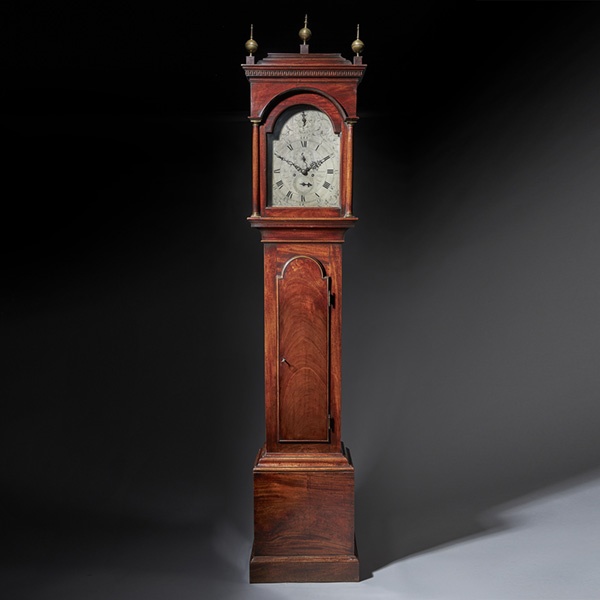
Fine George III 18th Century Period Mahogany Longcase Clock by Tomas Fowle
18th Century Period Mahogany Longcase Clock by Tomas Fowle £12,995 Follow Us18th Century Period Mahogany Longcase Clock by Tomas Fowle A fine George III period mahogany longcase clock of excellent colour, patination and proportions, circa...
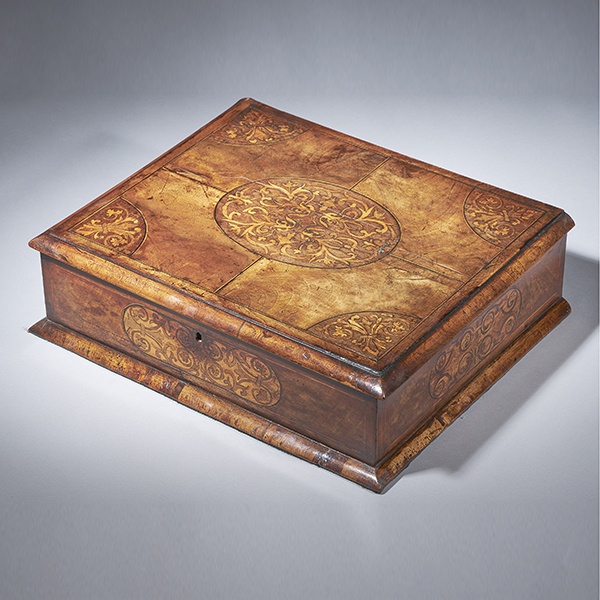
17th Century Figured Walnut and Seaweed Marquetry Lace Box
17th Century Figured Walnut and Seaweed Marquetry Lace Box £3,600 Follow Us17th Century Figured Walnut and Seaweed Marquetry Lace Box A fine and extremely rare figured walnut and seaweed marquetry 'lace box', circa.... let’s break it down -...
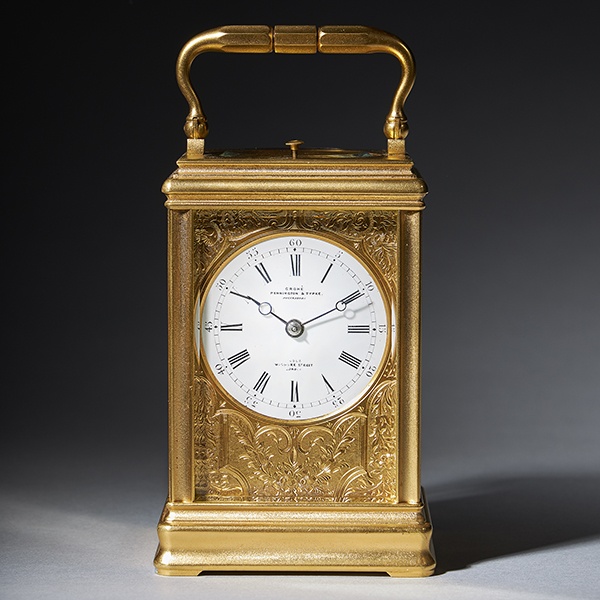
19th Century Repeating Gilt-Brass Carriage Clock by the Famous Drocourt
19th Century Repeating Gilt-Brass Carriage Clock by the Famous Drocourt £5,600 Follow Us19th Century Repeating Gilt-Brass Carriage Clock by the Famous Drocourt A superb repeating carriage clock with a gilt-brass gorge case by the famous maker...
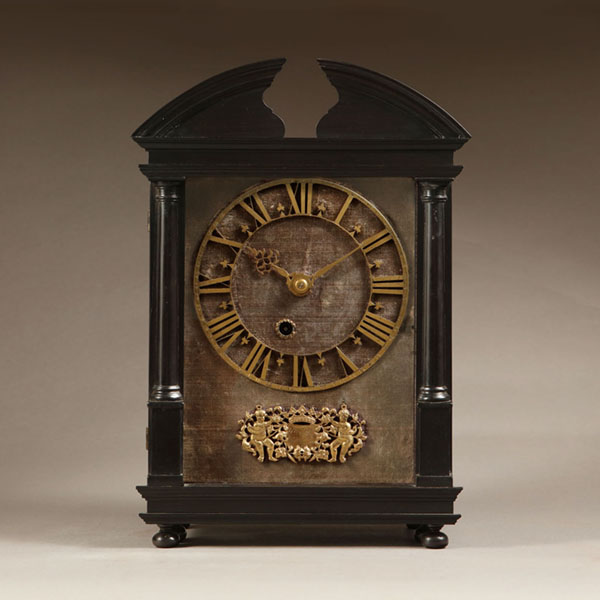
17th-Century Hague Clock Signed by Pieter Visbagh, circa 1675
Small 17th Century Hague clock made c. 1675 by Pieter Visbagh, who was apprenticed by Salomon Coster. The latter made the first pendulum clock according to the instructions of Christiaan Huygens, the internationally renowned scientist who developed the idea of applying a pendulum to a clock movement.

Pair of 18th-Century English Rococo Gilt Bronze Andirons or Firedogs
An exceptional pair of 18th century English Rococo gilt bronze andirons or fire dogs.
The bold shape of these andirons relate to designs of Thomas Johnson (1714–1778), one of London’s pioneers of the ‘Modern’ or French style, later known as Rococo.
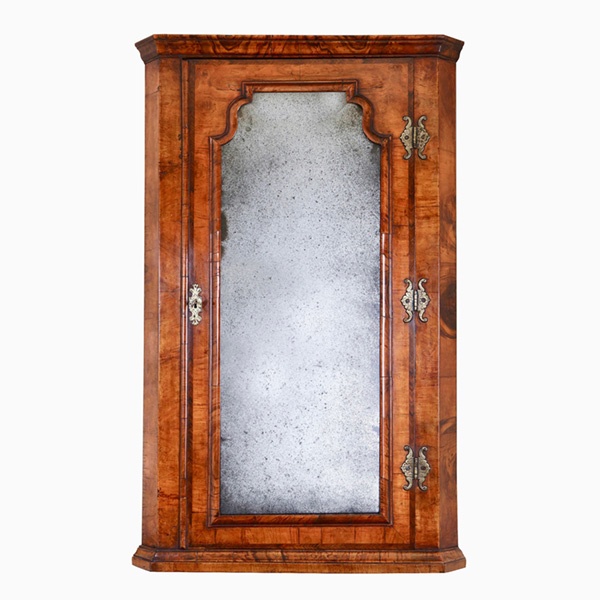
Queen Anne Walnut Corner Cupboard with Bevelled Mirror Plate
A truly remarkable find in original condition. To the door a shaped soft bevelled mirror plate is framed by a cross-grain molding of typical queen Anne design which is further cross-banded, feather-banded and edged to the opening with a single de-molding.

Fine George III 18th Century Period Mahogany Longcase Clock by Tomas Fowle
18th Century Period Mahogany Longcase Clock by Tomas Fowle £12,995 Follow Us18th Century Period Mahogany Longcase Clock by Tomas Fowle A fine George III period mahogany longcase clock of excellent colour, patination and proportions, circa...

17th Century Figured Walnut and Seaweed Marquetry Lace Box
17th Century Figured Walnut and Seaweed Marquetry Lace Box £3,600 Follow Us17th Century Figured Walnut and Seaweed Marquetry Lace Box A fine and extremely rare figured walnut and seaweed marquetry 'lace box', circa.... let’s break it down -...

19th Century Repeating Gilt-Brass Carriage Clock by the Famous Drocourt
19th Century Repeating Gilt-Brass Carriage Clock by the Famous Drocourt £5,600 Follow Us19th Century Repeating Gilt-Brass Carriage Clock by the Famous Drocourt A superb repeating carriage clock with a gilt-brass gorge case by the famous maker...

17th-Century Hague Clock Signed by Pieter Visbagh, circa 1675
Small 17th Century Hague clock made c. 1675 by Pieter Visbagh, who was apprenticed by Salomon Coster. The latter made the first pendulum clock according to the instructions of Christiaan Huygens, the internationally renowned scientist who developed the idea of applying a pendulum to a clock movement.

Pair of 18th-Century English Rococo Gilt Bronze Andirons or Firedogs
An exceptional pair of 18th century English Rococo gilt bronze andirons or fire dogs.
The bold shape of these andirons relate to designs of Thomas Johnson (1714–1778), one of London’s pioneers of the ‘Modern’ or French style, later known as Rococo.

Queen Anne Walnut Corner Cupboard with Bevelled Mirror Plate
A truly remarkable find in original condition. To the door a shaped soft bevelled mirror plate is framed by a cross-grain molding of typical queen Anne design which is further cross-banded, feather-banded and edged to the opening with a single de-molding.



















